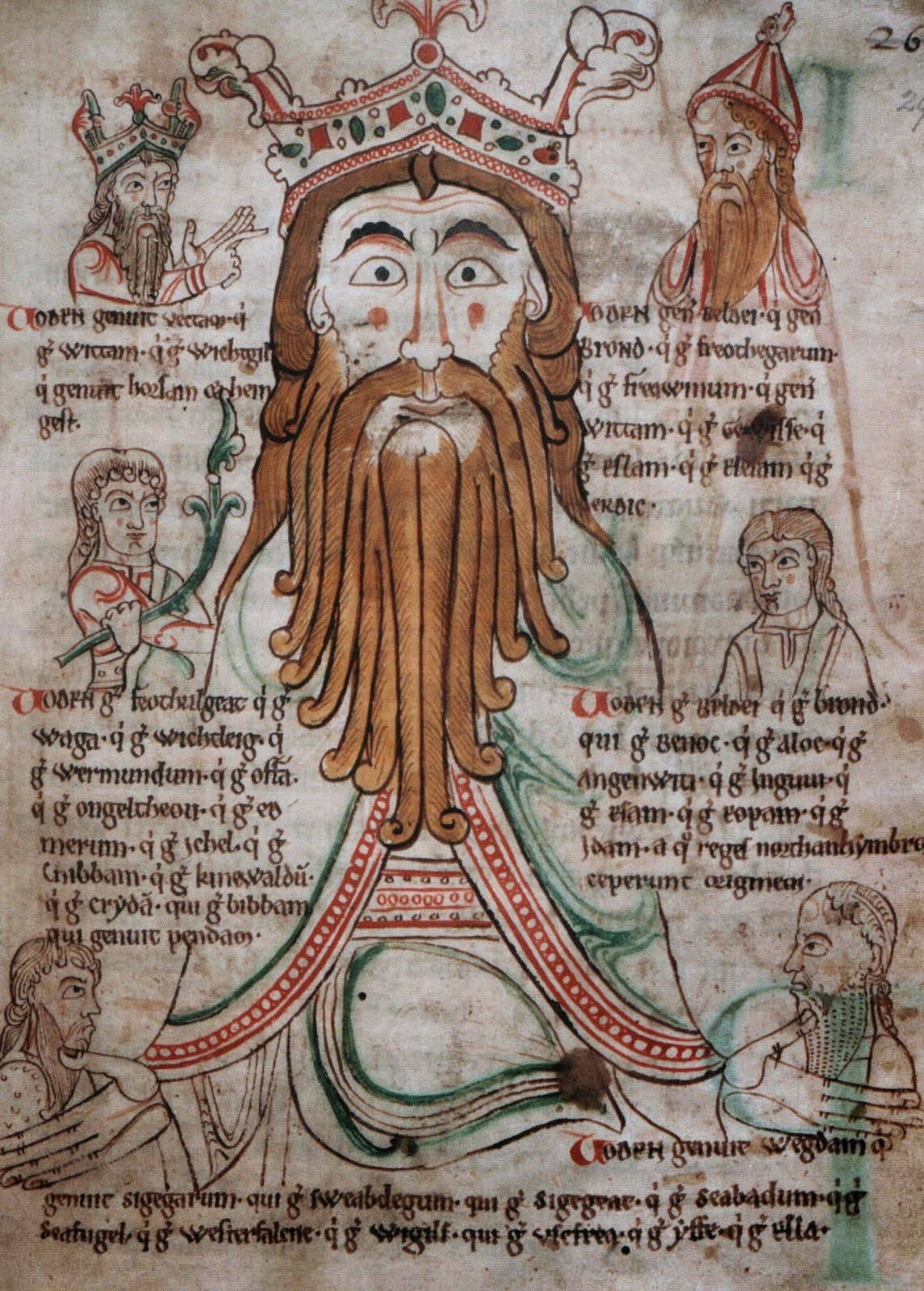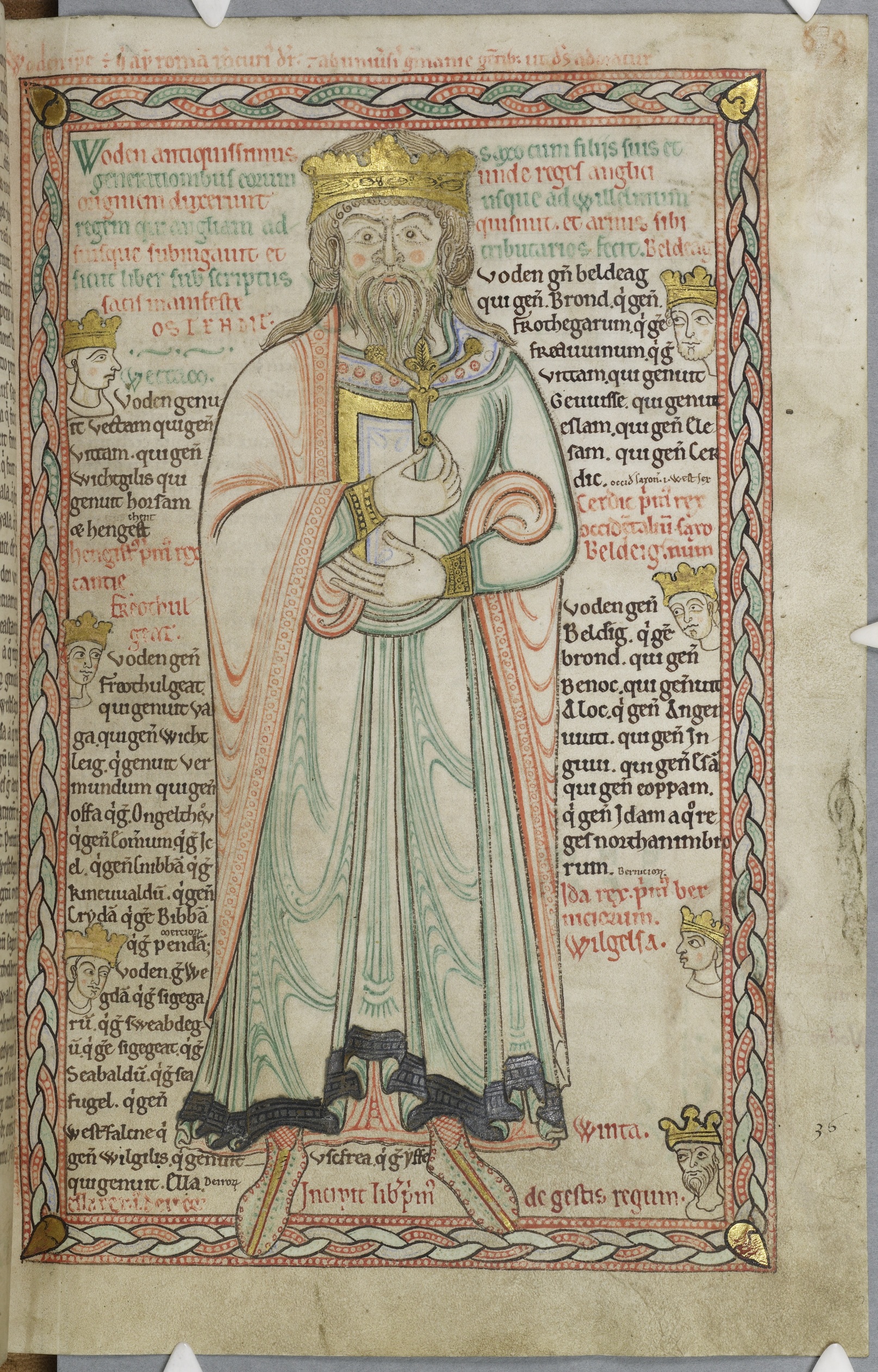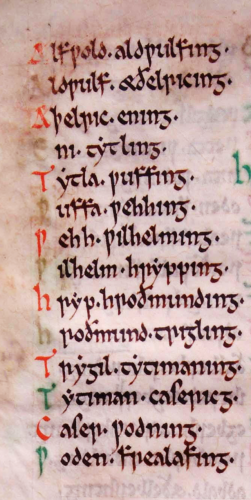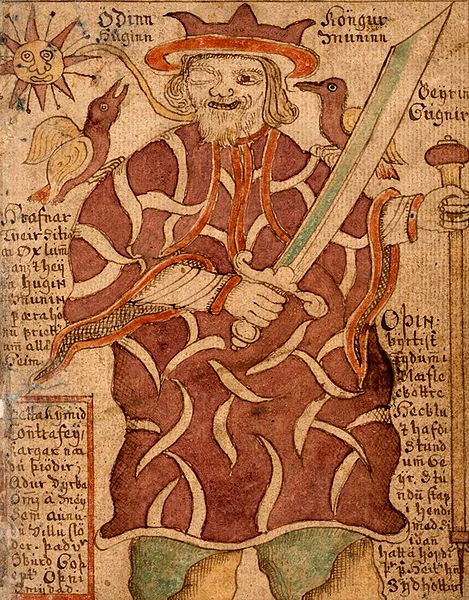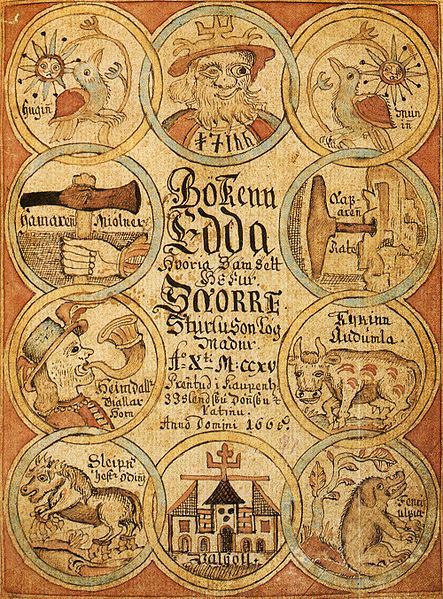The account of Abel’s slaying in Genesis represents one of those moments where the desire for more detail is frustrated utterly by Scripture’s silence. How did Cain murder his brother? Where did he learn to kill? What did he do with the body? And so on and so forth in this manner, without recourse to satisfactory answers from the primary sources.
Much like Nature, however, ancient and medieval scriptural commentators abhorred a vacuum; wherever lacunae existed in the biblical narratives, many were more than happy to fill the gaps with clever conjecture, rationalistic explanations, and apocrypha sourced from a variety of traditions. Perhaps the grandest example of this taste for a veritably encyclopedic concatenation of biblical trivia is what Bernard Bischoff economically called Das Bibelwerk (or the Reference Bible), the massive eight-century Irish biblical commentary bearing the Latin title Pauca problesmata de enigmatibus ex tomis canonicis (“Little Questions on Obscurities from Canonical Books”). Unsurprisingly, then, there arose in both the early Jewish and Christian textual communities a number of traditions dealing with the precise method of Abel’s murder.
The neck or head, for example, is identified in a number of early Jewish sources, including the Genesis Rabbah, as the anatomical locus of Abel’s murder. Similarly, the Babylonian Talmud explains how Cain, unfamiliar with the mechanics of death, effectively unleashes a flurry of wild blows until he finds the sweet spot of the neck. The neck and its vital organs are further implicated in the act of strangulation or suffocation, a method alternatively suggested both in Ambrosiaster’s Quaestiones Ueteris et Noui Testamenti CXXVII and the Reference Bible.
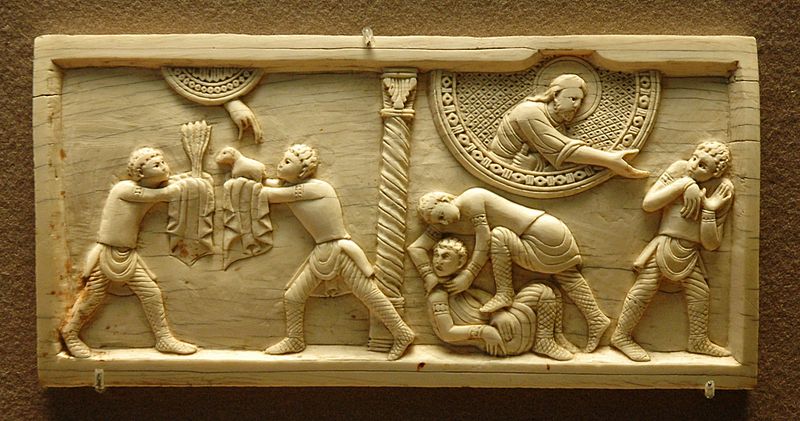
Tucked away in a quirky little sermon on tithing dating from at least the eighth century (a copy of which survives in British Library, MS Royal 5. E. XIII, ff. 9r-11r ), we also find the jarring explanation that Cain both suffocated and decapitated Abel with the jawbone of an ass, perhaps even implying that he used animal’s remaining teeth to saw off his brother’s head. Yikes! In fact the earliest literary source to specify the jawbone of an ass as Cain’s murder weapon is a comment on Genesis IV. 8 found in glosses originating from the Canterbury school of Theodore and Hadrian in the seventh century.
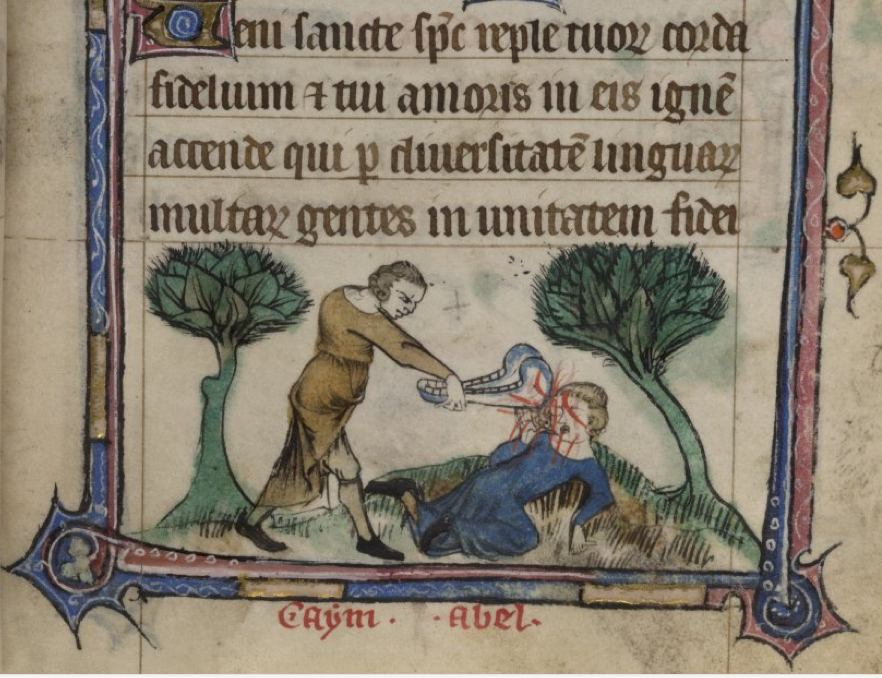
Among others, J. E. Cross and T. D. Hill have also noted the presence of this tradition both in the later Old English prose dialogue Solomon and Saturn, as well as in the mid twelfth-century Irish Lebor Gabála Érenn, where the jawbone is said to be that of a camel.
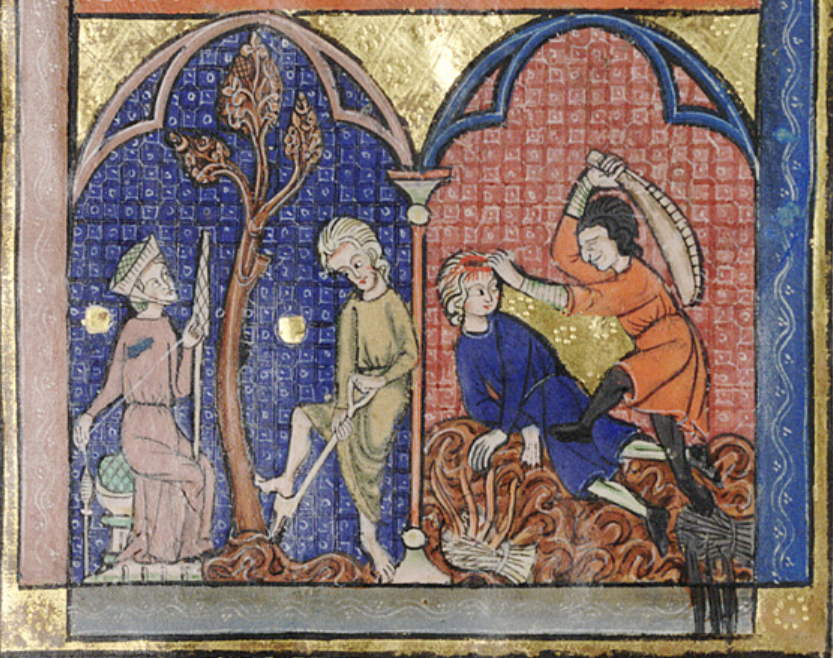
The extra-scriptural tradition that Cain used a jaw-bone (whether that of an ass, camel, or otherwise) to slay his brother may ultimately derive, as M. Shapiro and A. A. Barb have suggested, from his designation as a tiller of the ground. In trying to account for the murder-weapon, early literal-minded commentators may have sought an instrument germane to Cain’s agrarian occupation, such as a scythe.
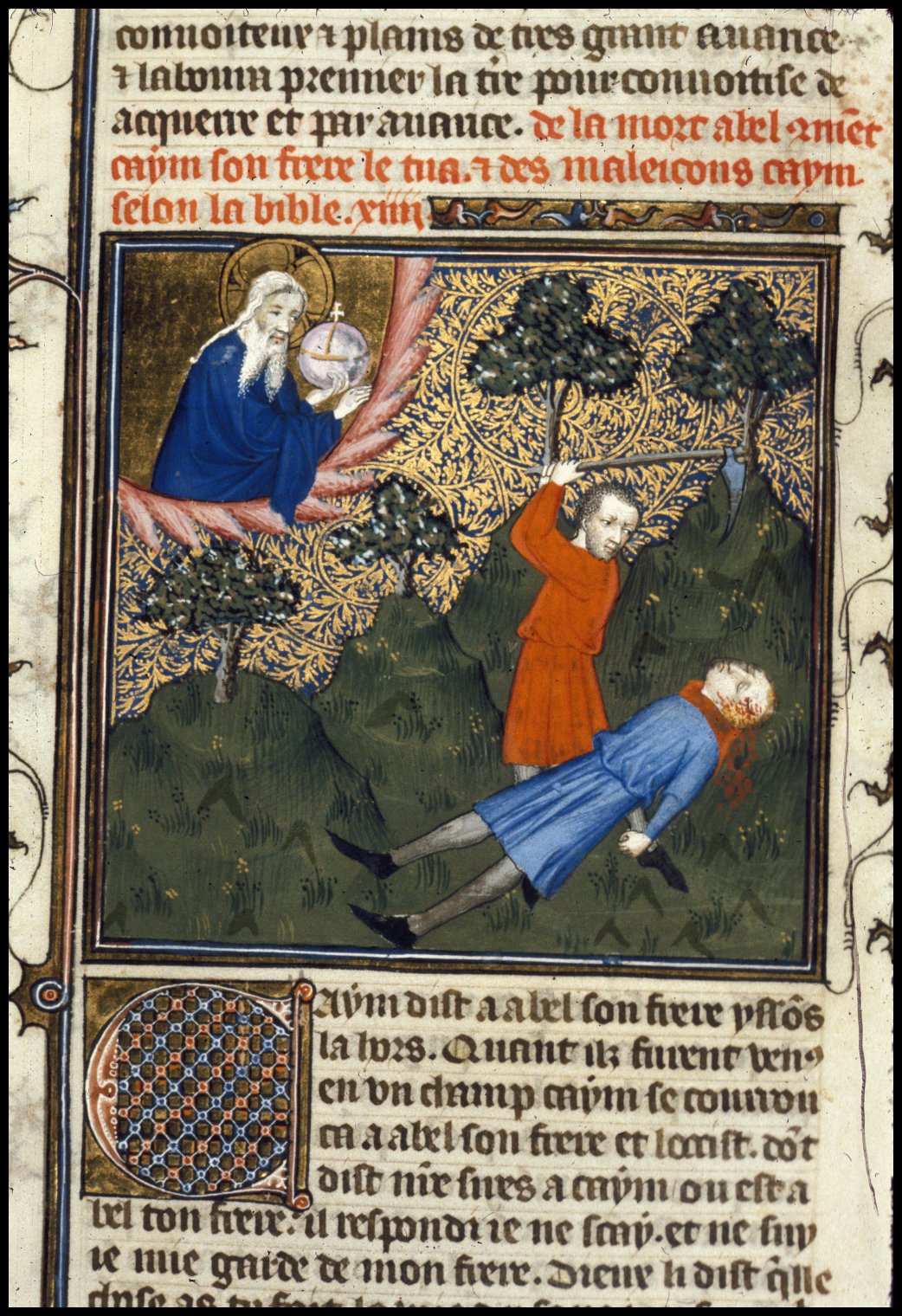
Such an implement would not, of course, have been made from metal, since the forging of metal tools only began generations later with Tubal-Cain, as any early biblical scholar worth his salt would have remembered. In the absence of metallurgical science, then, a scythe or sickle would have been made of animal bone, perhaps even a jawbone (or so the argument goes). As it happens, excavations of Near Eastern palaeolithic settlements have discovered just this sort of object, animal jawbones inset with flint blades as a replacement for the original teeth.
That his agrarian occupation did encourage other creative conjectures, however, is clear enough from the statement, found in the eighth or ninth-century Vita Anstrudis, that Cain killed his brother with a hoe; or from Benzo of Alba’s Ad Heinricum Imperatorem Libri VII where, this time, Cain is said to have used a shovel.

Yet by far the most macabre explanation comes to us from the thirteenth-century Joca monachorum (“Monks’ Jokes”) dialogue. There, in response to the question how Cain decapitated his brother, the interrogator is told matter of factly that, since he didn’t have a sword, Cain used his teeth, and then buried Abel twelve feet deep. One of the very earliest sources to allude to this outrageously primal method of killing is the apocryphal Latin Life of Adam and Eve (or the Apocalypse of Moses in the Greek version), a collection of texts largely considered to be Jewish in origin and dating to the first century AD. Here Eve is said to have dreamt of Abel’s murder, seeing in her vision Cain mercilessly drinking up every drop of his brother’s blood and vomiting it forth upon the earth. A striking depiction of this scene can be found in the so-called “Alba Bible” from Maqueda, Spain (c. 1430).
Some such source as this must also lie behind the account given in the Zohar (a thirteenth century collection of esoteric and Kabbalistic scriptural exegesis), where Cain is said to have bit his brother like a serpent because he did not know how to separate body and soul.
It is worth pointing out as well that the Book of Enoch, an apocryphal Jewish text dating from around the third to first century BC, describes the antediluvian giants of Genesis 6 as cannibalistic monsters who drank the blood of their own race. These very giants, according to the tradition preserved in both the Irish Reference Bible and the Old English poem Beowulf, among others sources, had sprung directly from the murderous seed of Cain. The Book of Enoch, or at least a fragment of its Latin translation, was also definitely known in Anglo-Saxon England by the tenth century at the latest, and it is perhaps this very bit of apocryphal lore that the Beowulf poet had in mind when describing the monstrous kin of Cain, among whom the blood-drinking horror of the marches—Grendel—numbered.
While certainly not exhaustive, the above little discussion will have shown, if nothing else, how wonderfully (or frightfully) imaginative and diverse apocryphal tradition could be in the face of Scripture’s silence. For questions remained, and answers were demanded—and when every detail, no matter how seemingly trivial, potentially held deep symbolic significance, such silence was indeed unacceptable. Luckily, there existed a robust inheritance of extra-biblical sources and authorities to satisfy even the most inquisitive of minds.
Christopher Scheirer
PhD Candidate
Medieval Institute
University of Notre Dame
Further Reading:
Bischoff, Bernard and Michael Lapidge, eds., Biblical Commentaries from the Canterbury School of Theodore and Hadrian (Cambridge, 1994), p. 499.
Barb, A. A., “Cain’s Murder-Weapon and Samson’s Jawbone of an Ass,” Journal of the Warburg and Courtauld Institutes 35 (1972), pp. 386-87.
Cross, J. E., “Cain’s Jawbone: Earlier Allusions” in KM 80: A Birthday Album for Kenneth Muir, Tuesday, 5 May, 1987, ed. A. Kettle (Liverpool, 1987), p. 33.
Cross, J. E. and T. D. Hill., The Prose Solomon and Saturn and Adrian and Ritheus (Toronto, 1982).
Henderson, G., “Cain’s Jaw-Bone,” Journal of the Warburg and Courtauld Institutes 24.1/2 (1961), pp. 108-114.
Mellinkoff, Ruth, “Cain’s Monstrous Progeny in Beowulf: Part I, Noachic Tradition,” Anglo-Saxon England 8 (1979), pp. 143-162.
Orchard, Andy, Pride and Prodigies: Studies in the Monsters of the Beowulf-Manuscript (Toronto, 1995), pp. 58-85.
Shapiro, M. “‘Cain’s Jaw-bone That Did the First Murder’,” The Art Bulletin 24.3 (1942). Pp 205-212.
W. Suchier, ed. Das mittellateinsche Gespräch Adrian und Epictitus: nebst verwandten Texten (Joca Monachorum) (Tübingen, 1955), no. 23, p. 124.
Genesis Rabbah: The Judaic Commentary to the Book of Genesis. A New American Translation, trans. J. Neusner (Atlanta, 1985), p. 248.
Sanhedrin, ed. I. Epstein, trans. Jacob Shachter, 2 vols. (London, 1935), I, 37b, p. 237.
Vita Anstrudis Abbatissae Laudunensis V, 25-26, ed. W. Levison, MGH: Scriptorum Rerum Merovingicarum 6 (Hannover, 1913), p. 68: “Semper enim pars malorum infesta est parti piorum, ex quo Cain fregit sarculo guttur fraternum.”


